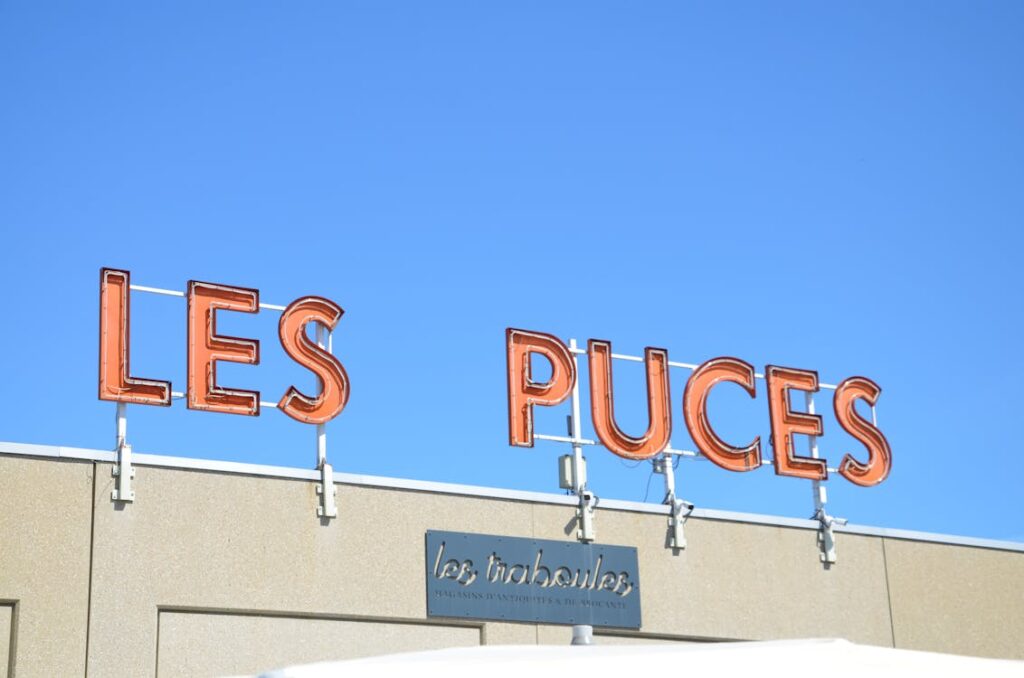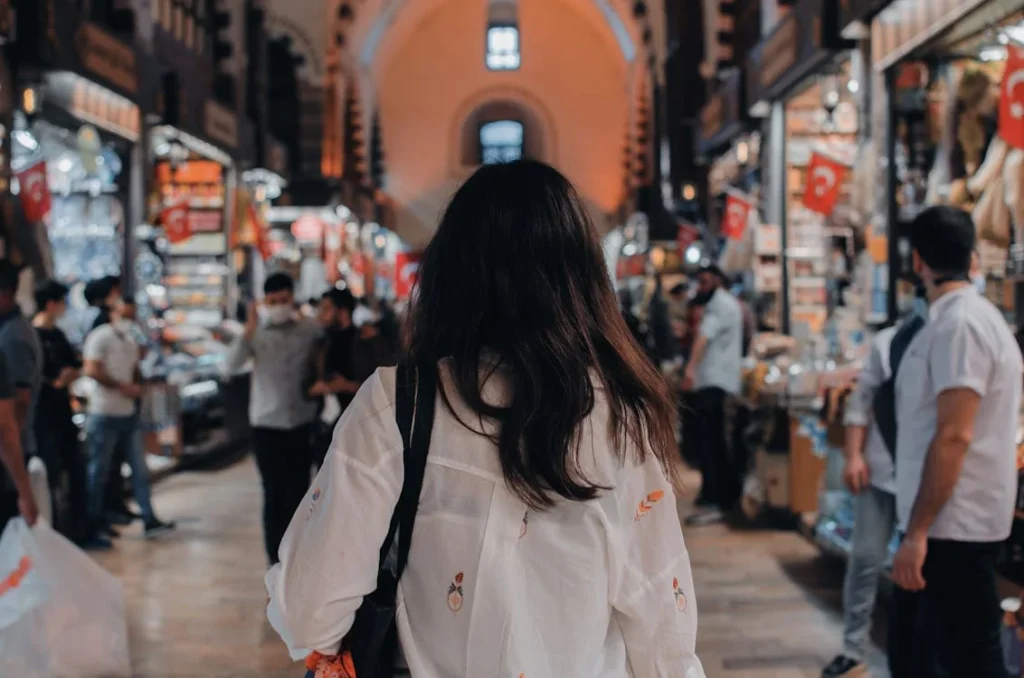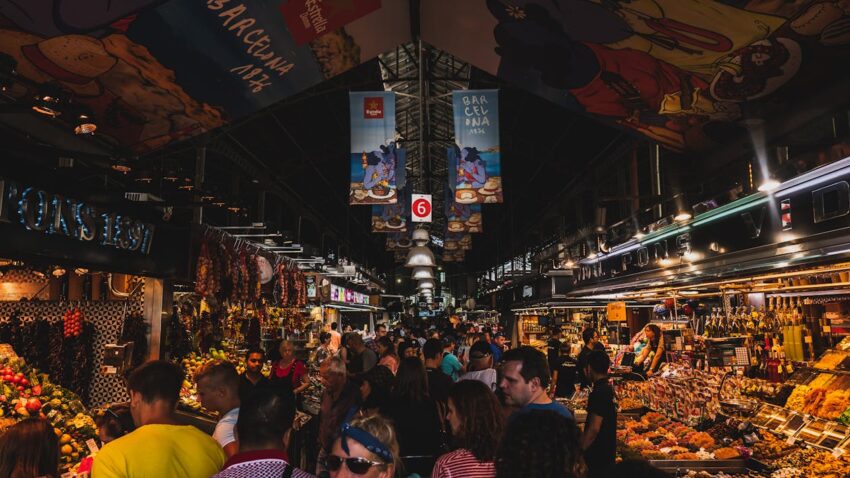Imagine wandering through narrow alleyways surrounded by vibrant colors and exotic scents. Offbeat markets in these destinations offer adventurous travelers more than just typical tourist spots. These hidden gems are shopper’s paradises, filled with unique finds and authentic experiences.
- Explore narrow alleyways filled with vibrant colors and exotic scents.
- Discover offbeat European markets offering unique finds and authentic experiences.
- Enjoy shopping paradises that showcase handmade crafts and local delicacies.
- Every market corner tells a culture-rich story waiting to be uncovered.
- Bring back not just souvenirs but also cherished stories from these cultural marketplaces.
From handmade crafts to local delicacies, every corner tells a story. Exploring these cultural markets not only saves you money but also lets you bring home unforgettable souvenirs and memories.
Exploring Hidden Treasures

Beyond the touristy facades, Europe has hidden gems begging for exploration. These offbeat markets, each offering a distinct touch of local culture and treasure troves of unique finds, are indeed a shopper’s dream. Discover the allure and charm of these vibrant spaces that hold stories within every stall.
1. La Boqueria, Barcelona, Spain
Nestled in the heart of Barcelona on Las Ramblas, La Boqueria is a dynamic tapestry of colors, sounds, and aromas. The vibrant atmosphere is irresistible as you meander through stalls teeming with fresh produce, seafood, and local specialties. Whether you’re craving a freshly-made smoothie or a taste of Spanish ham, it’s all there for the taking.
- Typical Opening Hours: The market is open from 8:00 AM to 8:30 PM, Monday to Saturday.
- Notable Events: Seasonal food festivals are common, offering cooking workshops and tastings.
2. Les Puces de Saint-Ouen, Paris, France
Step back at Les Puces de Saint-Ouen, one of Paris’s most revered antique markets. Established in the late 19th century, its cobbled lanes whisper tales of old Paris. Les Puces is a sprawling treasure trove filled with everything from vintage fashion to rare books and historic trinkets.
- Location: Situated near the Porte de Clignancourt, it’s easily accessible via public transport.
- Tips for Visitors: Sunday mornings are ideal for fewer crowds and better deals. Bring cash for bargaining!
3. Mercado de Motores, Madrid, Spain
Located within a former railway museum, Mercado de Motores is not just a market but an experience. The venue, surrounded by vintage trains, sets the stage for a playful shopping excursion. This market is a captivating blend of vintage goods, artisan crafts, music, and street food trucks.
- Special Events: Hosted every second weekend of each month, excluding August, bringing together craftspeople, designers, and music enthusiasts.
- Unique Features: Its fusion of retro charm with modern flair makes it a must-visit for lovers of history and innovation.
These offbeat markets capture the city’s heartbeat, offering products and an immersive cultural experience.
Markets Beyond the Mainstream: A Shopper’s Guide

Europe’s offbeat markets are a treasure trove of charm, offering an authentic glimpse into local life. These vibrant hubs are more than just shopping spots—they’re windows into culture, tradition, and the lively heartbeat of community life. Whether you’re wandering through eclectic stalls in one of the cheap European countries to visit or soaking in the colorful energy of narrow market lanes, the sights, sounds, and scents will captivate you. Ready for a shopping adventure like no other?
Navigating the Markets
Visiting these markets requires some strategy to make the most of your experience. Here are some practical tips to ensure a rewarding trip:
- Optimal Visiting Times: Aim to arrive early in the morning. This helps you avoid the busiest crowds while finding the freshest goods. Weekdays typically promise a quieter experience than weekends.
- Handling Negotiations: Bargaining is an art and is expected in many European markets. Start by offering a lower price than you intend to pay, then slowly work upwards. Keep it friendly and light-hearted.
- Cash is King: Many vendors rely on cash transactions, so carry small denominations for convenience.
- Respect Local Customs: Be aware of the unspoken rules. In many places, touching produce is frowned upon unless you’re buying.
Must-try Foods and Hidden Gems
Europe’s markets offer a smorgasbord of culinary delights and unique finds. Here’s what you shouldn’t miss:
- Savoring Local Delicacies: Whether looking for fresh paella in Spain’s markets or creamy cheeses from France, each market has its signature dish.
- Hidden Vendors: Many markets have stalls tucked away that offer the best buys. For instance, a small kiosk might sell the most aromatic spices sourced locally in Paris. Discovering these stalls often means wandering a bit off the main path.
- Eco-Friendly Products: There is a growing trend for sustainable products, from reusable bags to eco-friendly cosmetics. These are not only good for the environment but also make thoughtful souvenirs.
Whether sampling a sweet treat or haggling for a keepsake, each visit to these markets becomes a story woven into the fabric of your travels. Let every smell, taste, and interaction enrich your journey.
Experiencing Culture Through Markets
Visiting offbeat markets in Europe offers an enchanting way to experience the culture and history of each region. These vibrant marketplaces are more than just places to find unique items; they reflect the communities and rich histories.
Cultural Significance of European Markets
European markets are vibrant spaces where history and culture come alive. From the architecture to the food and local customs, these markets offer a unique glimpse into the soul of their regions. They’re not just hubs of commerce but living museums that preserve and celebrate tradition.
- Cultural History: Markets reflect the rich history and traditions of their regions.
- Local Cuisine: Food stalls showcase generations-old specialties unique to the area.
- Living Museums: Iconic spots like Les Puces de Saint-Ouen and La Boqueria embody their cities’ cultural heartbeats.
- Community Events: Markets often host events celebrating regional customs and traditions.
- Economic and Cultural Hubs: These spaces blend commerce with storytelling, preserving traditions while embracing modernity.
Participating in Local Traditions
Exploring local markets is more than just shopping—it’s a chance to immerse yourself in local traditions, culture, and community. From seasonal festivals to friendly conversations with stall owners, these vibrant spaces offer unique experiences that make your travels unforgettable.
- Seasonal festivals, art workshops, and live music often occur in markets, offering fun and cultural activities.
- Opportunities to participate in local traditions, like festive dances or learning to make regional delicacies.
- Friendly stall owners provide insider tips on the best eateries and hidden gems in the area.
- Engaging with locals and their crafts creates meaningful connections and lasting memories.
- It is a perfect way to go beyond sightseeing and truly experience the rhythm of local life.
Engage with these bustling marketplaces, and you’ll find that they offer more than just commodities. They offer a slice of life, rich with tradition and history, wrapped in the vibrant tapestry of local community spirit.
Practical Tips for Market Exploration

Embarking to explore Europe’s offbeat markets promises rich experiences and vibrant cultures. Yet, a successful trip isn’t only about the sights and sounds, safety, and preparedness. Here are some practical tips to enhance your market adventures.
Safety and Etiquette
Crowded markets can be both thrilling and overwhelming. Ensuring your safety amidst the hustle is as crucial as understanding local etiquette.
- Stay Aware: Getting swept up in the crowd is easy in bustling marketplaces. Keep your belongings secure and your phone within reach.
- Respect the Stallholders: Good manners go a long way. Always ask before photographing stalls or products. Remember, a smile and a polite greeting in the local language can set a friendly tone.
- Local Customs Matter: Each market has its own unspoken rules. In some places, haggling is expected, while the price is fixed in others. Familiarize yourself with these nuances to avoid faux pas.
Equip yourself with these safety tips and etiquette practices to enjoy a seamless shopping experience.
Planning Your Visit
The key to a successful market visit often lies in planning. From schedules to weather, considering these elements can make all the difference.
- Check Market Days: Not all markets run daily. Research the market schedules of your chosen destinations ahead of time to avoid disappointment.
- Weather Considerations: Since many markets are outdoors, the weather could impact your plans. Check forecasts beforehand, and pack accordingly—sunhat for the heat or umbrella for the rain. A sunny market day is inviting and enchanting, like the sunny outdoor market in Nice.
- Avoid Peak Times: Aim for early morning visits to experience a less crowded atmosphere. This typically means a quieter shopping experience and often fresher goods.
Adequate preparation ensures you make lasting memories while exploring these vibrant marketplaces. Keep these tips in mind for your next European market venture.
Final Thoughts
Offbeat European markets entice with their vibrant atmospheres, offering a true taste of local culture and history. Each market is a treasure trove of unique finds, from delectable delicacies to rare antiques. They’re perfect for those who yearn to go beyond the typical tourist path.
- Research the best time to visit each market for a lively experience.
- Create a list of must-try foods and local crafts.
- Plan your route to include these markets efficiently.
- Check local customs or etiquette to enhance your visit.
- Pack a reusable bag for your market finds.
Share your market adventures and insights; your story could inspire others to embark on their market journeys. Let these vibrant spaces become a cherished part of your travel narrative.





